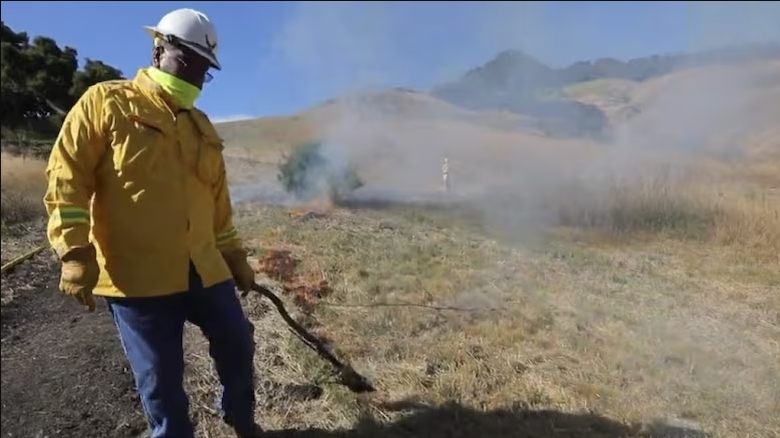Indigenous Cultural Burns Gain Momentum for Wildfire Prevention in B.C. and California
Liam O'Connell
1/22/20252 min read


As wildfires continue to devastate California, with over 14,000 structures destroyed and 27 lives lost in the Palisades and Eaton fires, Indigenous leaders in B.C. and California are calling for the adoption of cultural burning practices to prevent such disasters.
“What’s really missing is the Indigenous perspective on these fires,” said Joey Gonzales, a Tataviam and Chumash community member in California. “They could have been prevented.”
In B.C., Jeremiah Louis, fire chief for the Takla Nation, recalls how cultural burns saved homes during the 2021 White Rock Lake wildfire near the Okanagan Indian Band.
“In the beginning, I felt helpless,” he said, explaining how traditional burns reduced fuel around vulnerable homes, sparing them from destruction.
What Are Cultural Burns?
Cultural burning is a fire management technique practiced by Indigenous peoples in Canada, the U.S., and beyond. It involves controlled burns to eliminate fuel build-up, promote the growth of native plants, and restore ecosystems.
Unlike prescribed burns led by government agencies like B.C. Wildfire Service or CAL Fire, cultural burns are community-driven, incorporating Indigenous knowledge to achieve cultural and environmental objectives.
“A cultural burn makes way for fresh, healthy grass for wildlife to eat, which is a traditional food source for Indigenous communities,” said Louis.
Support for Indigenous Knowledge
B.C.’s Ministry of Forests and the B.C. Wildfire Service recognize cultural burns as integral to land stewardship. Under the 2024 amendments to the Wildfire Act, the province pledged to assist First Nations with cultural fire projects.
Former forest minister Doug Donaldson said the province aims to conduct 5,000 hectares of cultural and prescribed burns annually.
“Cultural and prescribed burns are ecologically appropriate ways to achieve a variety of land stewardship objectives,” the wildfire service noted.
In California, however, cultural burning has faced significant barriers. The practice was banned in 1850 and only legalized again in 2022, though it remains heavily regulated.
“Indigenous people have been caring for these lands for thousands of years,” said Leah Mata-Fragua of the Chumash tribe in Central Coast California. “We understand the geography, what plants are native, and what’s invasive.”
She highlighted that palm trees and eucalyptus, iconic in California’s landscape, are invasive species that exacerbate wildfires.
More Than Fire Prevention
Cultural burns serve broader purposes beyond fire mitigation. They encourage native plant regrowth, improve seed production, and support cultural practices like traditional basket weaving.
“After a burn, the shoots for basketry come up straight and healthy,” Mata-Fragua explained.
As wildfire seasons intensify, Louis and Mata-Fragua hope communities and governments will embrace cultural burns as a vital tool for disaster prevention and cultural preservation.
“Cultural burning is about more than protecting homes,” said Louis. “It’s about restoring balance to the land.”
News
Stay updated with the latest BC news stories, subscribe to our newsletter today.
SUBSCRIBE
© 2025 Innovatory Labs Inc.. All rights reserved.
LINKS
